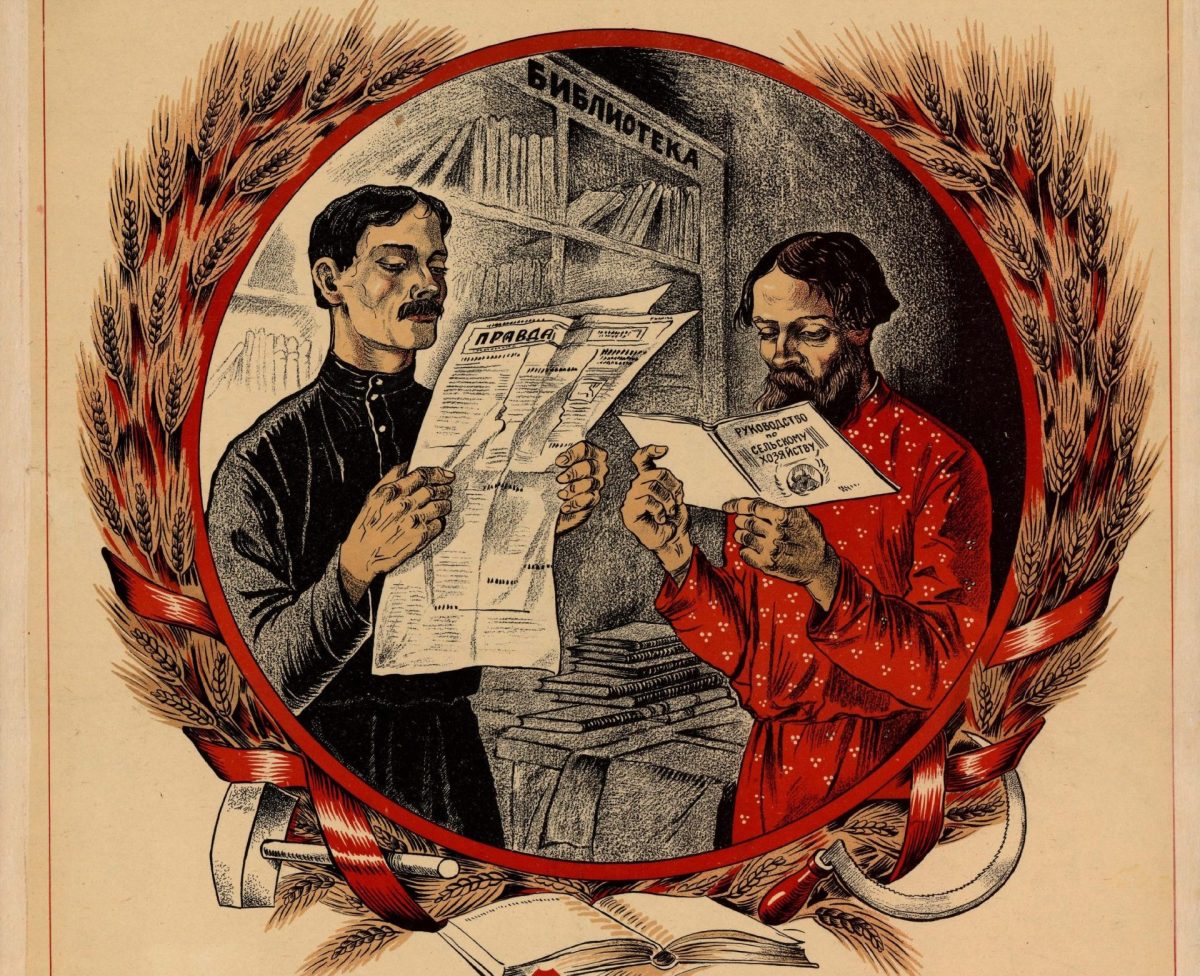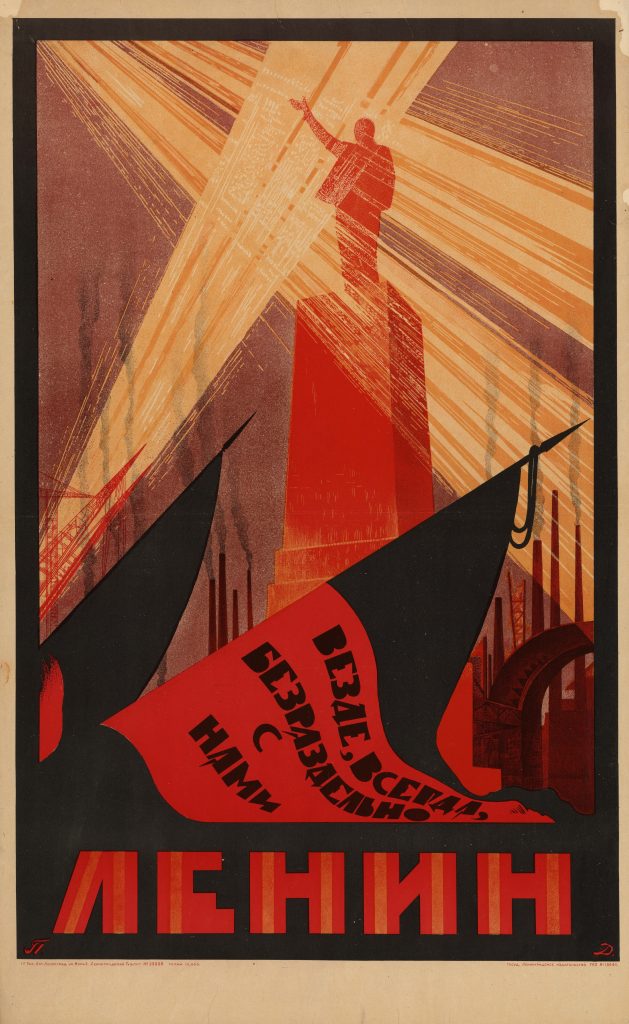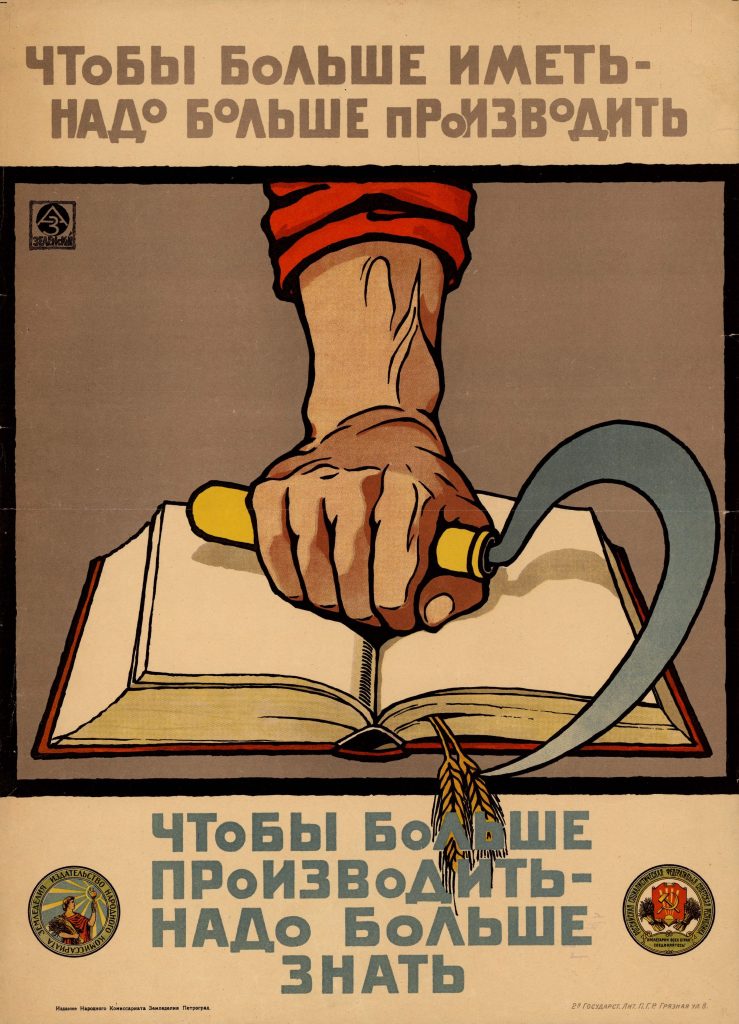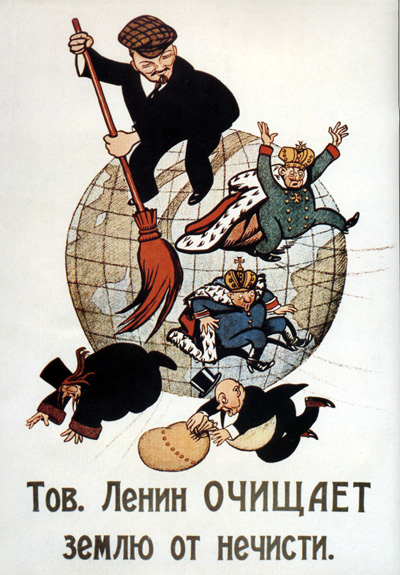
Hammer, sickle, and shades of red. The ingredients of Soviet propaganda in the 1920s.
Throughout history communication of governments with their citizens has always been an interesting topic to observe. Since Ancient Mesopotamia and Egypt, the rulers always tried to find new ways to communicate their message to their “target audience.” But, until the 20th century, this propaganda wasn’t used in a measure like it was used by the totalitarian governments of the 20th century. One of them was the government of the Soviet Union which truly mastered “the art of manipulation.” During the 1920s, and the early rise of the Soviet state, this activity became quite intense.
The Power of Boiling Blood
The image speaks a thousand words. Its power is incredible. In a matter of seconds it overwhelms the human conscience and provokes emotions. And finally, the reaction wanted. If we observe the image of Lenin “everywhere and always,” it’s not surprising why the dominant color is red.

But, apart from being the recognizable color of the Soviet Union, red is the color of action. Action needed during these years to build the state the leaders and philosophers talked about. Like it reflects the situation of that era. Boiling. And, as history has shown, the boiling blood of the masses can be extremely powerful.
Propaganda Strongly Mixed With Education
“To have more, we must produce more. To produce more, we must know more,” says one of the Soviet propaganda posters from the 1920s. It is a well-known fact that knowledge is power. But how does one stop people from using that knowledge to rebel against the government? The answer is simple, take control of it. Or, in the case of 1920s USSR, “paint it in red.”

The propaganda poster from the 1920s that emphasizes the importance of learning and education has all the important elements to do that. A strong, muscular fist (with a little red sleeve showing) is very strongly pressing on an empty book with the sickle and the two branches of wheat under the pages. Education under control.
Sympathy from the People
Great propaganda always finds a way to the target audience’s heart. When seeing the message, the receiver needs to connect with it. Therefore, in some way it has to be similar to some aspect of people’s lives.

If we take a closer look at the image of “Comrade Lenin cleans the Earth of scum”, the scene is simple. A broom, just like any other broom used in Soviet house held in the city or countryside, is in the hands of a leader who is doing a simple action done by people. An example to provoke sympathy, one of the strongest emotions “that sells.”
